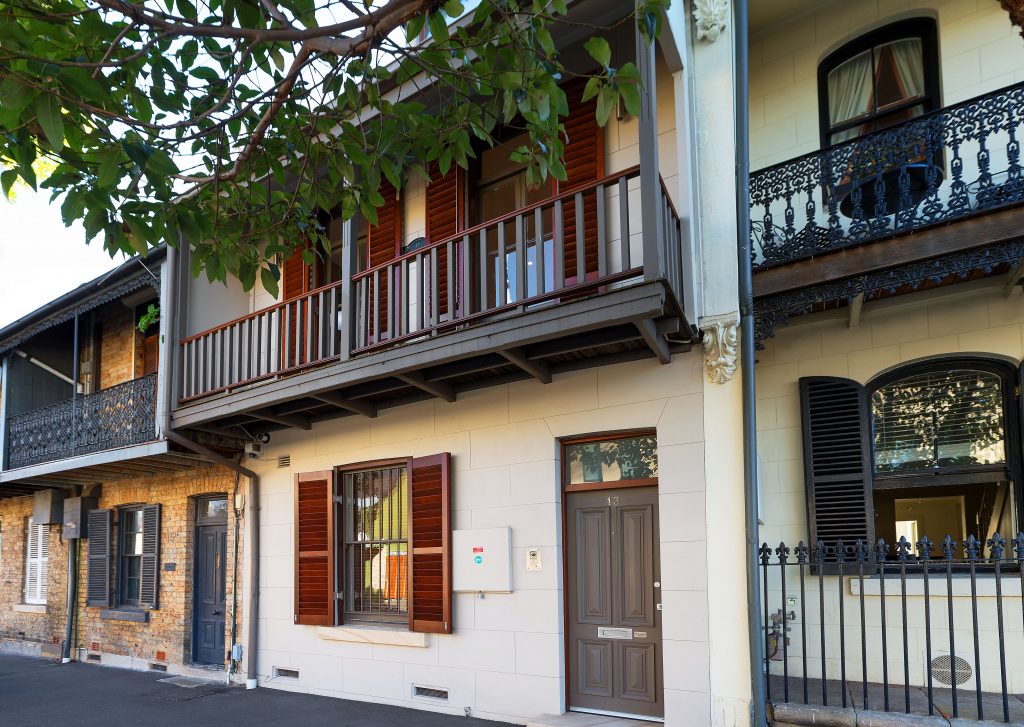13 Bourke Street Woolloomooloo

Hidden behind the heritage facade of this 1878 worker’s cottage lies a modern pied-à-terre, a French term literally meaning “a foot on the ground”.
13 Bourke Street, Woolloomooloo, is for sale through Jason Boon and Geoff Cox https://www.rwebay.com.au/4370072/
This home is a representative example of a mid-19th century Victorian Filigree-style terrace, part of row of terraces at 9-21 Bourke Street built 1868-78. They make a positive contribution to the streetscape.
Filigree terraces are known for their overhanging balconies, some with filigree wrought iron lace, others with wooden posts and railings, such as number 13.
Their foot print is relatively small but nowadays is considered highly environmentally efficient and sustainable.
Number 13 dates from a key period in the development of Woolloomooloo after the 1860s land reclamation around the edge of the bay and the subsequent subdivision for development nearby. The first subdivision in the Woolloomooloo Basin had already occurred in 1842.
Development intensified with the gold rushes between 1850 and 1870. By 1859 the area was significantly settled with a mixture of shops and residences, interspersed with remnant fenced paddocks.
The 1867 Sands’ Directory shows the area between Cowper Wharf Roadway and Nicholson Road as vacant with only number 25 Bourke Street developed by 1868. Numbers 15-21 are shown as first being occupied later, in 1875.
Number 13, now for sale, was listed as unfinished in 1877 but was probably completed the following year.
It was still vacant in 1884. However, by 1886 number 13 was occupied by Mister Henry Ireland, a boat proprietor.
At the same time Woolloomooloo was becoming one of the most popular and distinct divisions within the city. The streets were highly packed with modest workers’ cottages such as number 13, interspersed with a few earlier mansions.
But the social decline of the area was evident by the 1890s and continued through the first half of the twentieth century.
In the late 20th century the area became popular again due to its low-rise scale, village-style urban density and walking distance proximity to the CBD.
The area received a major fillip with the conservation of the Finger Wharf (constructed 1910-1913) and opposite Bourke Street. The wharf was saved from demolition in 1999 after a successful $300 million adaptive re-use restoration.
By Andrew Woodhouse, Heritage Solutions





